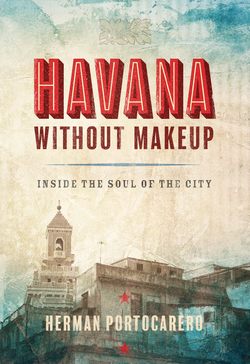Читать книгу Havana without Makeup - Herman Portocarero - Страница 11
На сайте Литреса книга снята с продажи.
Оглавление4.AFRO CUBA
Roaming Havana’s streets, you’ll encounter a remarkable mixture of races in every neighborhood. According to the latest available census, only about 10 percent of Cubans self-identify as “Afro-Cuban.” This figure seems seriously underreported, yet it’s a fact that people of African descent are a minority in Cuba, as compared to the overwhelmingly black population of the other Caribbean islands. On the ever-sensitive issue of race, self-identification in a census is notoriously unreliable, due to a range of social and psychological factors. Europeans, without the legacy of slavery at the receiving end, are often unaware how sensitive a topic race still is in the Americas, and especially in the Caribbean. The ongoing claim for reparations for the slave trade, kept on the agenda at the United Nations, illustrates this. Yet Cuba is more relaxed about the issue than most of her neighbors. By U.S. standards, racial attitudes and vocabulary in Havana are often downright politically incorrect. And despite people of African descent being a minority in the country, nowhere in the Caribbean, possibly nowhere in the Americas, are African traditions stronger and more alive than in Cuba. Among possible explanations, a few stand out.
Although slavery in Cuba was abolished late – in the 1880s, half a century later than in the British colonies – the peculiar slavery laws under the Spanish colonial system allowed for a greater number of Africans and people of color in Cuba to be manumitted, or to buy their freedom, than in English or French territories. As we will see, Cuba was still bringing new slaves from Africa almost until the system was abolished, although in theory this had been illegal under international law since 1815, when the Vienna Congress decreed the end of the transatlantic slave trade.
Before and after the abolition of slavery, the “cabildos de nación,” which regrouped free Africans according to their ethnic origins, developed into genuine lobbies that defended the interests of their members, and also maintained their traditions. In some cases the cabildos survived well into the twentieth century. In fact, some exist even today, albeit no longer as such formal institutions.
This made Havana unique once more: new slaves continued to arrive until the end of the nineteenth century, while at the same time the city saw a thriving social life among free Africans. These two phenomena came to mutually reinforce one another.
Like the Spanish immigrants in Havana who regrouped in regional clubs, so the Africans came together in their cabildos. These institutions had their remote origin in Spain, specifically in Seville, where the first cabildos had started to organize an annual carnival on the sixth of January, King’s Day in the Catholic calendar. This was always considered a special holiday for Africans, since one of the three kings or wise men, Balthazar, was the only acknowledged black saint.
Soon the Día de Reyes carnival became a Havana custom.
If we take a close look at the representations of these festivities as recorded by the nineteenth-century costumbrista painters, a few elements are striking.
The parading Africans were allowed to caricature their white masters or former masters – the age-old function of any carnival as a social safety valve. Those masters looked on suspiciously, half-barricaded in their homes, while their womenfolk on the balconies seemed almost too fascinated by the rhythms of the drums and the exuberant dancing.
But the political establishment around the captain general (as colonial governors were called) considered it their duty to stoically review the parade – one may imagine with what kind of comments behind the white gloves – and ended by throwing handfuls of coins to the crowds, thus creating a stampede which would reinforce white feelings of superiority for yet another year.
By the mid-nineteenth century, the balance between the races had become delicate due to the late flourishing of the sugar industry, which in Cuba only really took off after the British occupation of Havana in 1762–1763, and occasioned the enormous late influx of Africans brought to work on the plantations. On top of that came the independence struggle in Haiti, which resulted in the creation of the first black state in the Americas in 1804. From then on, the fear of a black republic would always be present in Cuba.
